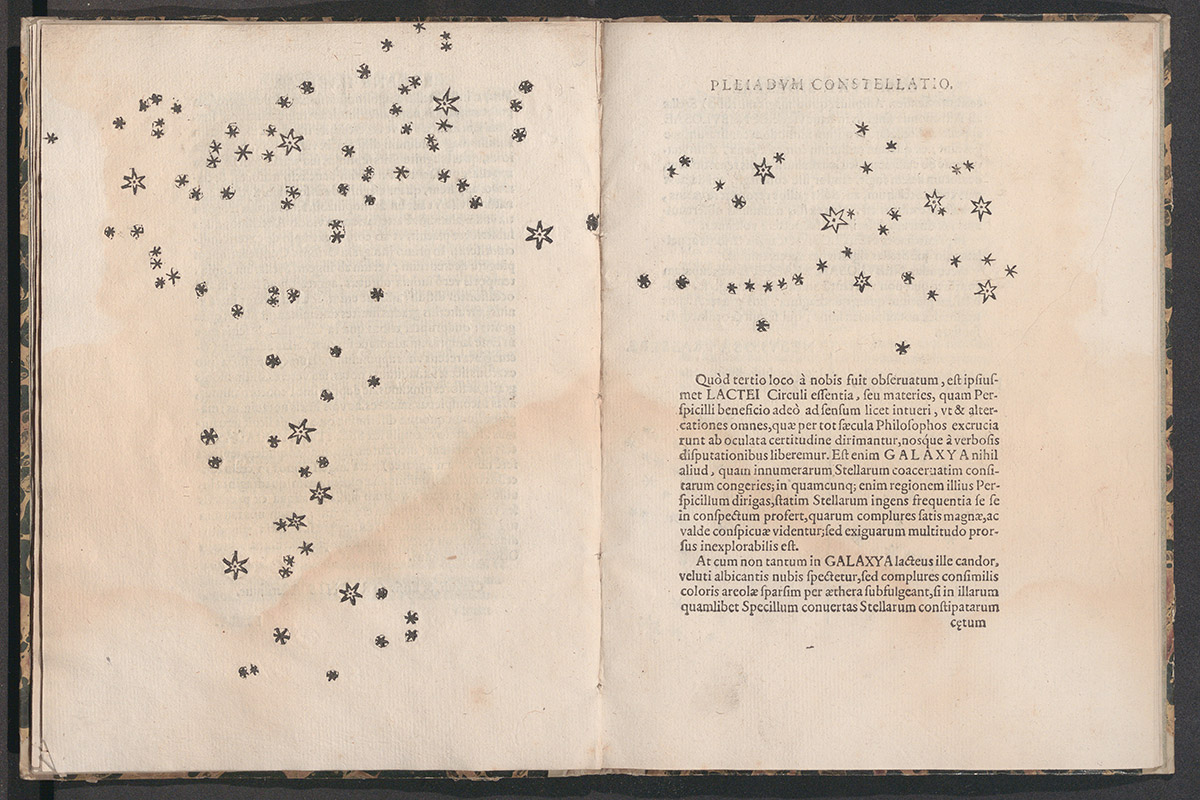Orion and the Pleiades

- Two woodcuts showing the belt and sword of the constellation of Orion, and the Pleiades.
- Galileo Galilei (1564-1642).
- Sidereus Nuncius Magna, longeque admirabilia spectacula pandens, suspiciendaque proponens unicuique, præsertim vero philosophis atque astronomis, quæ a Galileo Galileo Patritio Florentino Patavini gymnasii publico mathematico perspicilli nuper a se reperti beneficio sunt observata in Lunae facie, fixis, Lacteo Circulo, stellis nebulosis, apprime vero in quatuor planetis…Medicea Sidera nuncupandos decrevit.
- Venice: Thomas Baglionus, 1610.
Following the section on the Moon, Galileo recorded his observations of the fixed stars, including two examples: the segment of the belt and sword of the constellation of Orion, and that of the Pleiades, which are seen in these two woodcuts respectively. This section on the stars ends with a description of the nature or matter of the Milky Way (Lactei Circuli essentia, seu materies) and other nebular patches found in constellations such as Orion and Praesepe.
Whereas the new telescope could hardly magnify the body of the stars, being extremely bright compared with their small size, the planets could be easily seen as rounded disks. Consequently, Galileo’s observations supported the Copernican theory that the fixed stars were located very far away from the Sun and the Earth, with a huge distance between Saturn, at that time considered the outermost planet, and those fixed stars.